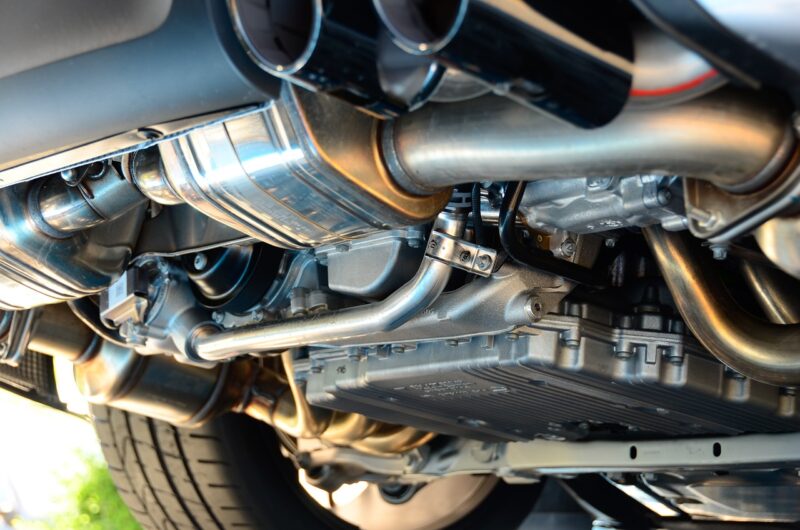The Role of Catalysts in Car Exhaust Systems: Reducing Pollution
November 16, 2024

Car emissions have been a significant concern for both public health and the environment. With the increasing number of vehicles on roads globally, the demand for methods to reduce car exhaust pollution has never been higher. One of the most crucial components in achieving cleaner emissions is the catalytic converter, a device that plays a pivotal role in modern automotive engineering.
1. Understanding Catalysts and Catalytic Converters
A catalytic converter is a type of emission control device that transforms harmful pollutants in exhaust gases into less harmful substances before they are released into the atmosphere. A catalyst is a substance that speeds up a chemical reaction without being consumed in the process. The catalytic converters primarily use precious metals—platinum, palladium, and rhodium—acting as catalysts to facilitate the conversion of harmful substances.
The primary reactions involved in a catalytic converter can be summarized as follows:
- Oxidation of Carbon Monoxide (CO):
Normal car exhaust contains carbon monoxide, a poisonous gas. In the presence of a catalyst, CO reacts with oxygen (O₂) to form carbon dioxide (CO₂), which is much less harmful. The reaction can be expressed as:
CO + O₂ → CO₂. - Oxidation of Unburned Hydrocarbons (HC):
Hydrocarbons are unburned fuel particles that escape during combustion. Catalysts help convert them into carbon dioxide and water (H₂O).
CₓHᵧ + O₂ → CO₂ + H₂O. - Reduction of Nitrogen Oxides (NOx):
Nitrogen oxides contribute to smog and acid rain. Catalysts reduce NOx to harmless nitrogen (N₂) and oxygen.
2 NOx → N₂ + O₂.
These reactions take place in the three-way catalytic converter, which handles all three primary pollutants simultaneously.
2. Types of Catalytic Converters
There are mainly two types of catalytic converters used in vehicles today:
- Two-Way Catalytic Converters:
These converters were used in older vehicle models and primarily focus on reducing hydrocarbons and carbon monoxide. They perform only oxidation reactions, lacking the ability to reduce nitrogen oxides. - Three-Way Catalytic Converters:
Most modern cars are equipped with three-way catalytic converters, which can handle all three major pollutants: carbon monoxide, unburned hydrocarbons, and nitrogen oxides. These devices effectively convert harmful gases into less harmful exhaust emissions, greatly improving air quality.
3. The Importance of Catalytic Converters in Reducing Pollution
The role of catalytic converters in reducing car exhaust pollution cannot be overstated. Here are some compelling reasons why they continue to be a critical component of automotive technology:
- Compliance with Environmental Regulations:
Many countries have strict emissions standards that vehicles must meet. Catalytic converters are vital in helping manufacturers produce engines that comply with these regulations. - Improving Air Quality:
By effectively converting harmful exhaust gases, catalytic converters contribute to cleaner air in urban areas, reducing respiratory problems and environmental pollution. - Health Benefits:
Reducing harmful emissions leads to fewer health issues related to air quality, such as asthma, lung diseases, and other conditions exacerbated by pollutants. - Technological Advances:
Ongoing research and development continue to improve the efficiency of catalytic converters, further reducing emissions. Innovations such as using alternative materials are being explored to lower costs and enhance performance.
4. Challenges and Future of Catalytic Converters
Despite their effectiveness, catalytic converters face several challenges:
- Theft of Precious Metals:
The precious metals used in catalytic converters have significant monetary value. This has led to an increase in thefts, posing a concern for vehicle owners and manufacturers alike. - Age and Efficiency Loss:
Over time and with higher mileage, catalytic converters can lose their efficiency due to poisoning from lead or sulfur in fuels or physical damage. Regular maintenance and sometimes replacements are necessary to ensure optimal performance. - Adapting to New Fuel Technologies:
As alternative fuel technologies rise, including electric and hydrogen vehicles, the role of traditional catalytic converters may evolve. Research is ongoing to develop catalytic processes that work efficiently with these new technologies.
As we strive for a more sustainable future, developing innovative solutions for emission control in vehicles remains paramount to enhancing air quality and promoting public health.
5. Conclusion
In summary, catalysts and catalytic converters play a fundamental role in modern automotive engineering, significantly reducing harmful pollutants. As environmental concerns grow stronger, the importance of these devices will only continue to rise. Efforts to improve their efficiency while addressing the inherent challenges will pave the way for cleaner and more efficient fuel technologies in the years to come.
By educating ourselves and advocating for sustainable practices, we can all contribute to reducing vehicle emissions and protecting our planet for future generations.







